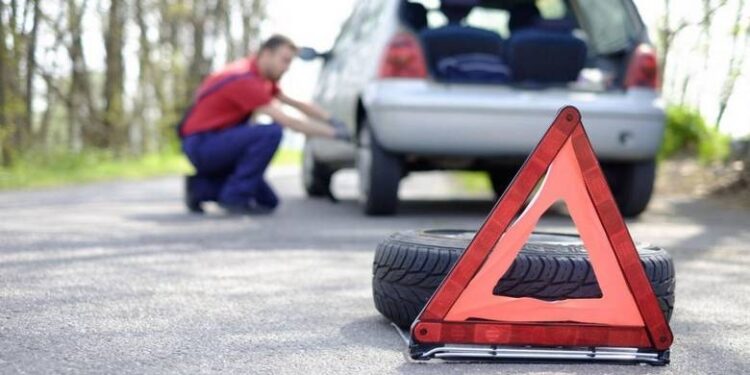In the worst-case scenario, if an emergency arises and your car breaks down in the middle of a road, the most important thing is to try to keep calm and think accordingly.
Following are the steps you should be mindful of in such situations and ensure your safety as well as that of other road users.
What conditions can cause your car to break down on the road?
If your car breaks down suddenly into the middle of the road then it must be because of the following reasons:
- Car temperature (that might have increased due to certain malfunctioning of the engine)
- If the car is on low engine oil and coolant.
- Worn out tyre.
- Car radiator.
What steps should you follow?
- Put on your hazard lights and if possible get off the road.
- Park the car and engage the handbrake.
- Put the warning, reflective triangle on the road at lead 45 meters behind your broken down vehicle on the same side of the road.
- Step away from the vehicle.
- Call 999.
Precautionary steps to take to avoid breakage of the car:
Tyre safety:
High temperature can seriously affect the tyres of the car. So one must check the condition of the tyre regularly.
A simple checklist will improve your chances of being safe during summer travel:
- Use only reputable branded and certified tyres.
- Use the tyre that fits your vehicle in the proper size and type.
- Check the tyre pressure at least once per month.
- Inflating tyres with nitrogen instead of air can help to maintain pressure stability for longer periods.
Car temperature:
What causes an engine to overheat in any vehicle? Low coolant levels, radiator malfunctions, or failure in internal engine components can all contribute to an overheating engine. What’s most important is to notice the problem in the first place by using your instrumentation panel to keep an eye on your engine’s performance.
The increased temperatures in the region increase the propensity for vehicle fires. Research indicates that 75 percent of vehicle fires are caused by bad maintenance, mechanical or electrical failures, or malfunctions.
Car radiator:
The radiator in your vehicle cools your engine and needs water and coolant (antifreeze) to function. Keep the following points in mind as you check the level of the liquid in your cooling system and add more, if necessary:
- Rather than open the cap on the radiator, just check to see whether the liquid reaches the “Full” line on the side of the coolant reservoir
- If the coolant has a sludgy, oily surface, immediately take the vehicle to your mechanic to check for internal head gasket leakage.
- While you’re messing around with your cooling system, feel the radiator hoses, too.
Try to investigate all of the above and if still, you cannot seek the problem step away from the vehicle and just call the nearest helping station.







































































